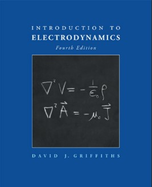Solution Found!
Refer to Prob. 7.16, to which the correct answer was (a)
Chapter 7, Problem 36P(choose chapter or problem)
Problem 36P
Refer to Prob. 7.16, to which the correct answer was
(a) Find the displacement current density Jd .
(b) Integrate it to get the total displacement current,
(c) Compare Id and I . (What’s their ratio?) If the outer cylinder were, say, 2 mm in diameter, how high would the frequency have to be, for Id to be 1% of I? [This problem is designed to indicate why Faraday never discovered displacement currents, and why it is ordinarily safe to ignore them unless the frequency is extremely high.]
Reference problem 7.16
An alternating current I = I0 cos (ωt) flows down a long straight wire, and returns along a coaxial conducting tube of radius a.
(a) In what direction does the induced electric field point (radial, circumferential, or longitudinal)?
(b) Assuming that the field goes to zero as s →∞, find E(s, t).15
Questions & Answers
QUESTION:
Problem 36P
Refer to Prob. 7.16, to which the correct answer was
(a) Find the displacement current density Jd .
(b) Integrate it to get the total displacement current,
(c) Compare Id and I . (What’s their ratio?) If the outer cylinder were, say, 2 mm in diameter, how high would the frequency have to be, for Id to be 1% of I? [This problem is designed to indicate why Faraday never discovered displacement currents, and why it is ordinarily safe to ignore them unless the frequency is extremely high.]
Reference problem 7.16
An alternating current I = I0 cos (ωt) flows down a long straight wire, and returns along a coaxial conducting tube of radius a.
(a) In what direction does the induced electric field point (radial, circumferential, or longitudinal)?
(b) Assuming that the field goes to zero as s →∞, find E(s, t).15
ANSWER:
Solution 36P
Step 1 of 4:
In this question, we need to find the current density
In part b, we need to find integrate the total displacement current to obtain
In part c, we need to compare if the outer cylinder has diameter
, how high would the frequency have to be for
to be 1% of
Part a:
